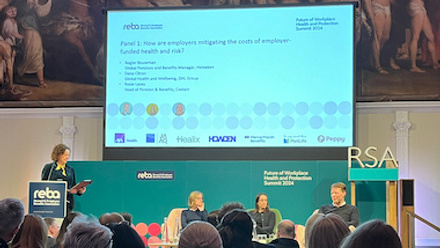Don't let tax implications creep up on your group life scheme

This is important because group life insurance benefits are the foundation upon which many employee benefit programmes are built.
The lifetime allowance (LTA) is a limit on the amount of pension benefit that can be drawn from pension schemes, whether lump sums or retirement income, and can be paid without triggering an extra tax charge. The allowance has fallen dramatically in the last few years, from £1.8m in 2011 to £1m in 2016, affecting many more employees.
Employers must wake up to the implications this reduction poses, otherwise they risk an overwhelmingly positive benefit having a negative side at claim stage, on an increasing number of employees' families.
The devil’s in the detail
Group life benefits are typically set up under a registered pension scheme and are therefore subject to the lifetime allowance. With pension benefits also held in a registered pension scheme, both benefits are aggregated before being tested against the lifetime allowance in the event of a person’s death.
It’s unlikely that employers will want to get involved in the personal tax planning of their employees, but they will know the level of death-in-service benefit they give their employees. If this is closing in on the £1m mark, employers ought to take seriously the fact their influential employees are likely to be impacted by the lifetime allowance.
And the impact is severe. The tax rate is 55% on all benefits over £1m and is paid by the beneficiary, which naturally can reduce the benefits paid out to an employee’s family.
Over the last few years the industry has been looking for ways to mitigate this risk. The solution is an excepted life policy set up under a trust, which does not fall under pension legislation and is therefore not impacted by the lifetime allowance.
The Swiss Re Group Watch 2016 report shows that the number of excepted schemes has increased by 20% in 2015, but in our experience there are still many employers who are unaware of this issue and inaction may bring unintended consequences for their high earning employees.
This needs some serious focus and specialist advice
Separating employees into two groups, placing employees whose benefits amount to less than the lifetime allowance in a registered scheme, and those whose benefits are likely to exceed it into an excepted scheme, could be the answer. Employers should build in a good margin for caution as the value of an individual’s funds are added to death benefits insured. But what are the differences from a traditional registered scheme?
Registered schemes allow you to define different benefit levels under the same policy, e.g. you may insure 'all managers' for six times salary and 'all other employees' for four times salary.
- Excepted life schemes are more restrictive and require each benefit level to be set up under an individual policy, which can complicate the administration on a large group of employees all on different benefit levels.
- In an excepted life policy while the lifetime allowance doesn’t apply, normal inheritance tax rules applicable to discretionary trusts do. This means tax charges after 10 years (periodic charge) and on exit may apply if there is value in the trust, created if an employee dies and the benefit is yet to be paid to the beneficiaries, or if an employee is terminally ill. Winding up the trust and replacing it prior to the 10 year anniversary is one potential solution.
- Going into a new registered scheme may void employees’ fixed protection, but a non-registered, excepted life scheme will not. An employee with fixed protection ought to think about coming out of a registered group life scheme as they may have already done with their auto-enrolled pension.
The good news is, it’s easier than ever to switch to an excepted life policy. Joining an insurer provided excepted trust can deal with trust complexities and trustee responsibilities, although employers should still seek adviser support to make sure it suits their circumstances. Unless the level of benefit is changing, switching to excepted is unlikely to impact the premiums charged and there’s no need to wait until renewal date.
However employers need to act quickly. Despite the complexity, this is one aspect of a benefit plan where the detail matters, otherwise what seems like a benefit could become a nasty complication for the employer and ultimately the family too.
This article was provided by Ellipse.






